
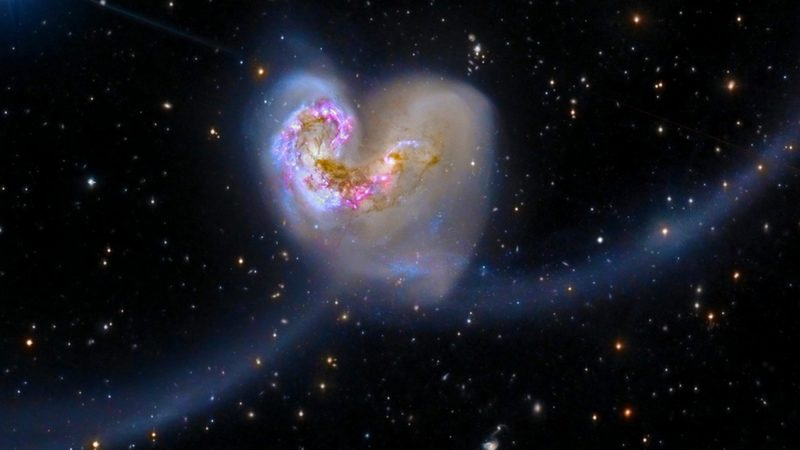
The Antennae Galaxies are 2 galaxies in the midst of colliding. Their collision is triggering star birth inside cocoons of gas and dust. This heart-shaped pair of galaxies is located in the direction of the constellation Corvus the Crow. Image via American Museum of Natural History.
Happy Valentine’s Day! We’re sharing the love by celebrating some of the many heart-shaped objects you can find from way out in the depths of space to closer to our neighborhood in the solar system to right here on Earth.
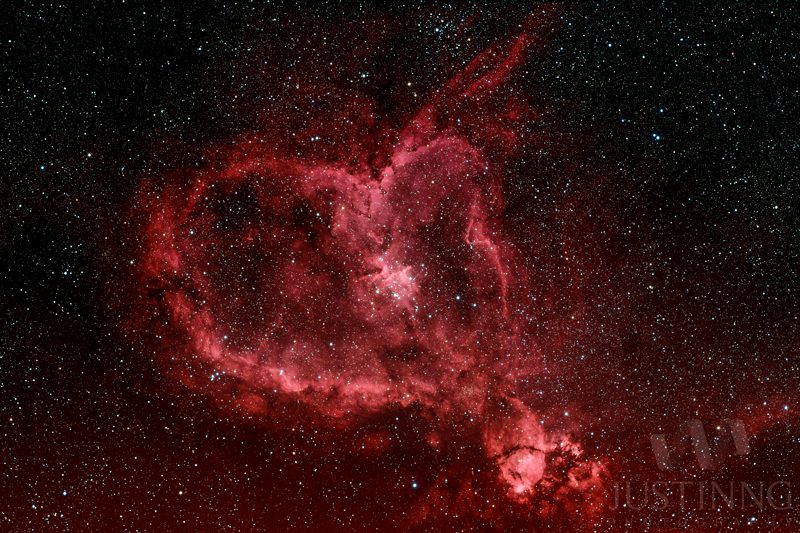
View larger. | Here’s IC1805, aka the Heart Nebula – a popular target for astrophotographers – via EarthSky community member Justin Ng.
The 2021 lunar calendars are here. A few left. Order yours before they’re gone!
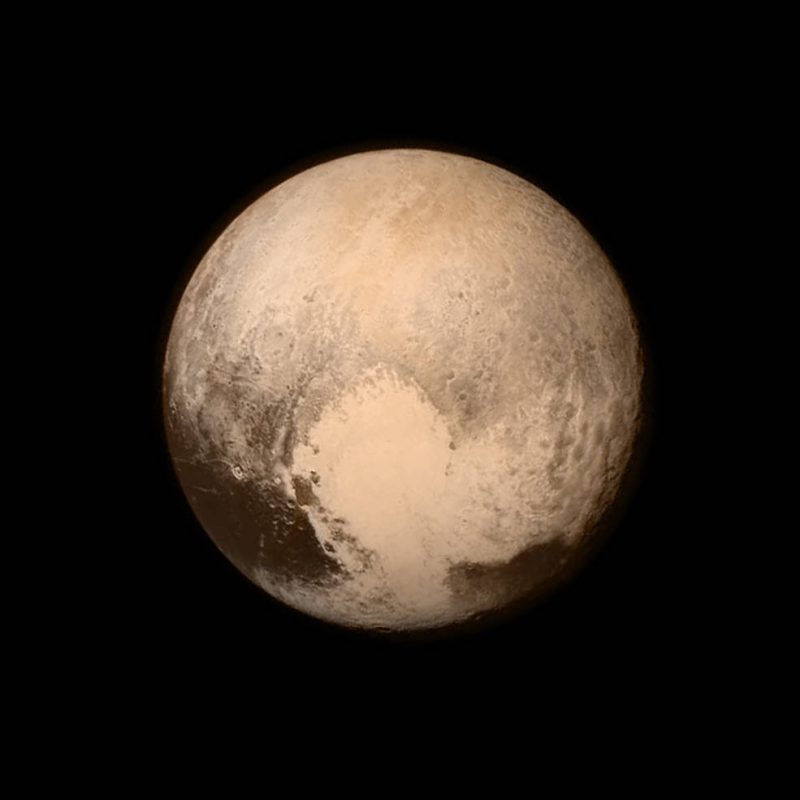
We love Pluto, too! The New Horizons mission, which swept closest to Pluto on July 13, 2015, revealed unique surface markings including this light-colored area that traces out a huge heart on the planet. Image via NASA/ APL/ SwRI.
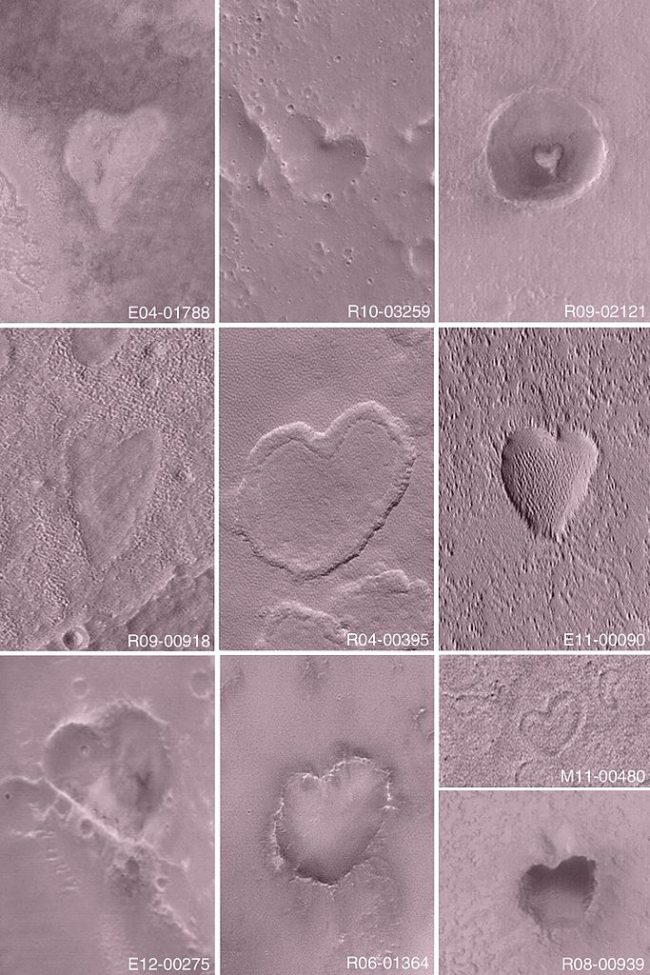
Mars has a lot of heart! These 10 images of craters with distinctive heart shapes were taken by the Mars Global Surveyor between 2001 and 2004. Image via NASA/ JPL/ Malin Space Science Systems.
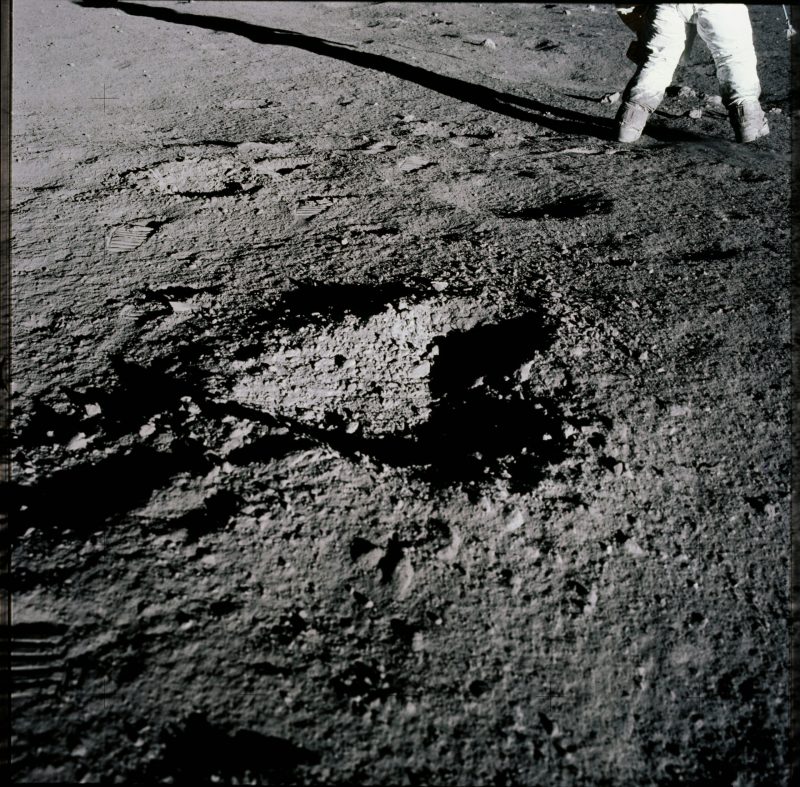
Let’s show a little love to this petite heart-shaped depression in the moon’s surface, photographed during the Apollo 12 extravehicular activity on November 19, 1969. The legs of astronaut Charles Conrad Jr. can be seen in the background. Image via NASA.
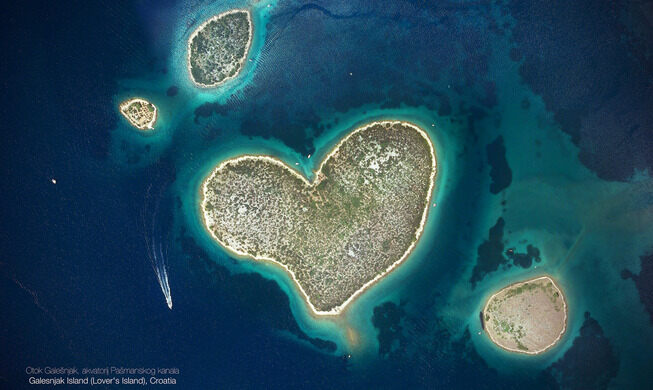
Back down on Earth, we find this heart-shaped island in the Republic of Croatia that’s just 164 feet (50 meters) wide. It’s Galesnjak, nicknamed Lover’s Island. This lovely shot was taken by ALOS, Japan’s Earth observation satellite. Image via ESA.
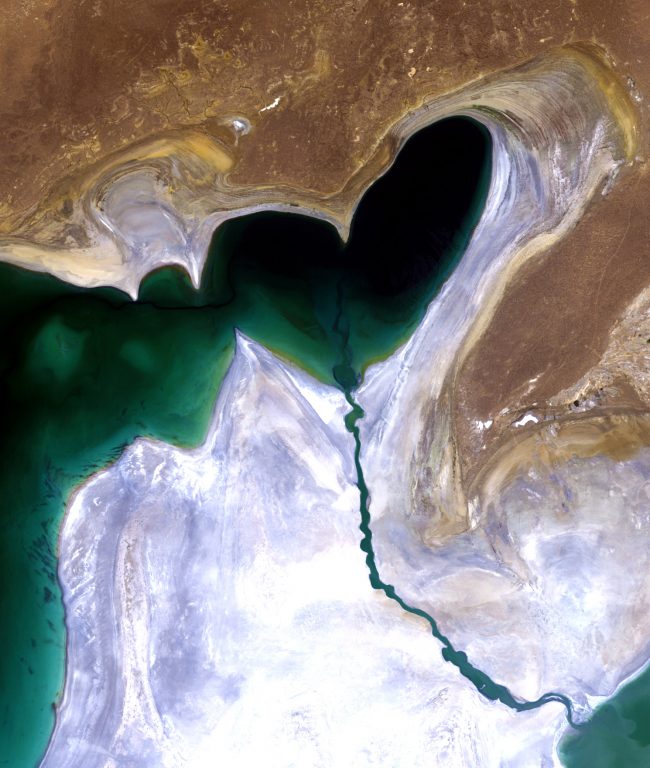
This dark-green lake is part of the Aral Sea in Kazakhstan with a heart shape that appears to be bleeding a thin stream of emerald liquid. Perhaps its heart is breaking because this shrinking sea is considered one of the planet’s worst environmental disasters. Image via World Top Top.
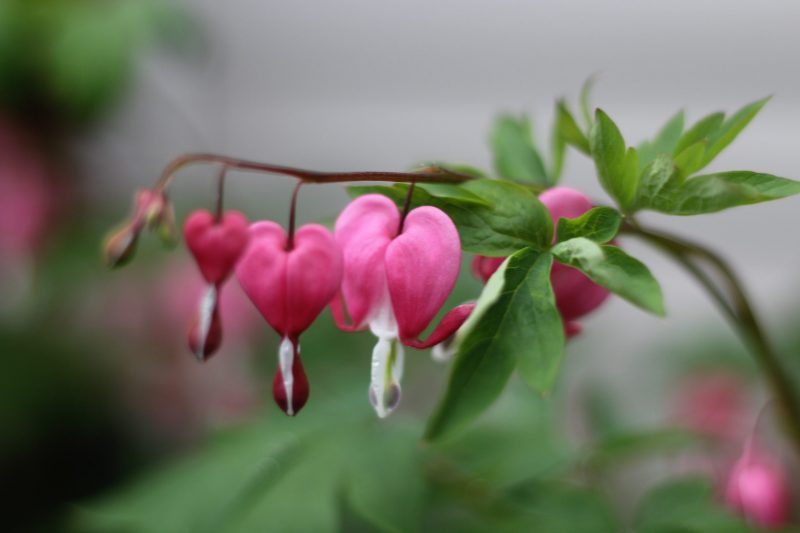
Heart-shaped leaves are common on Earth, and sometimes you can find heart-shaped blooms, too, such as this bleeding heart plant. Image via annie pm/ Unsplash.
Bottom line: The shape of hearts is ubiquitous in the universe, as seen through these photos from small petals on Earth to galaxies in the distant universe.
from EarthSky https://ift.tt/3ddR1bU


The Antennae Galaxies are 2 galaxies in the midst of colliding. Their collision is triggering star birth inside cocoons of gas and dust. This heart-shaped pair of galaxies is located in the direction of the constellation Corvus the Crow. Image via American Museum of Natural History.
Happy Valentine’s Day! We’re sharing the love by celebrating some of the many heart-shaped objects you can find from way out in the depths of space to closer to our neighborhood in the solar system to right here on Earth.

View larger. | Here’s IC1805, aka the Heart Nebula – a popular target for astrophotographers – via EarthSky community member Justin Ng.
The 2021 lunar calendars are here. A few left. Order yours before they’re gone!

We love Pluto, too! The New Horizons mission, which swept closest to Pluto on July 13, 2015, revealed unique surface markings including this light-colored area that traces out a huge heart on the planet. Image via NASA/ APL/ SwRI.

Mars has a lot of heart! These 10 images of craters with distinctive heart shapes were taken by the Mars Global Surveyor between 2001 and 2004. Image via NASA/ JPL/ Malin Space Science Systems.

Let’s show a little love to this petite heart-shaped depression in the moon’s surface, photographed during the Apollo 12 extravehicular activity on November 19, 1969. The legs of astronaut Charles Conrad Jr. can be seen in the background. Image via NASA.

Back down on Earth, we find this heart-shaped island in the Republic of Croatia that’s just 164 feet (50 meters) wide. It’s Galesnjak, nicknamed Lover’s Island. This lovely shot was taken by ALOS, Japan’s Earth observation satellite. Image via ESA.

This dark-green lake is part of the Aral Sea in Kazakhstan with a heart shape that appears to be bleeding a thin stream of emerald liquid. Perhaps its heart is breaking because this shrinking sea is considered one of the planet’s worst environmental disasters. Image via World Top Top.

Heart-shaped leaves are common on Earth, and sometimes you can find heart-shaped blooms, too, such as this bleeding heart plant. Image via annie pm/ Unsplash.
Bottom line: The shape of hearts is ubiquitous in the universe, as seen through these photos from small petals on Earth to galaxies in the distant universe.
from EarthSky https://ift.tt/3ddR1bU

Aucun commentaire:
Enregistrer un commentaire